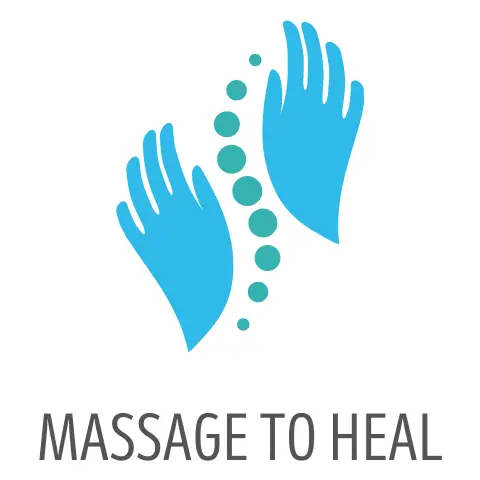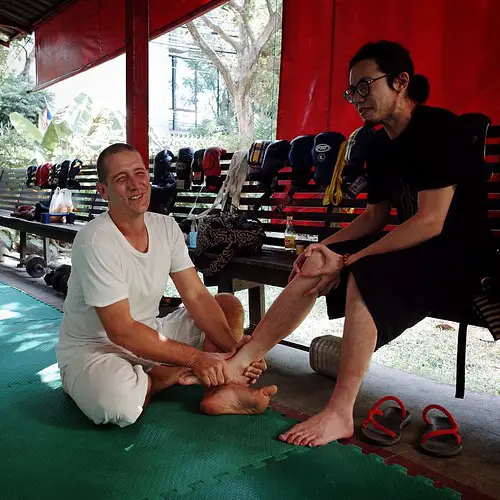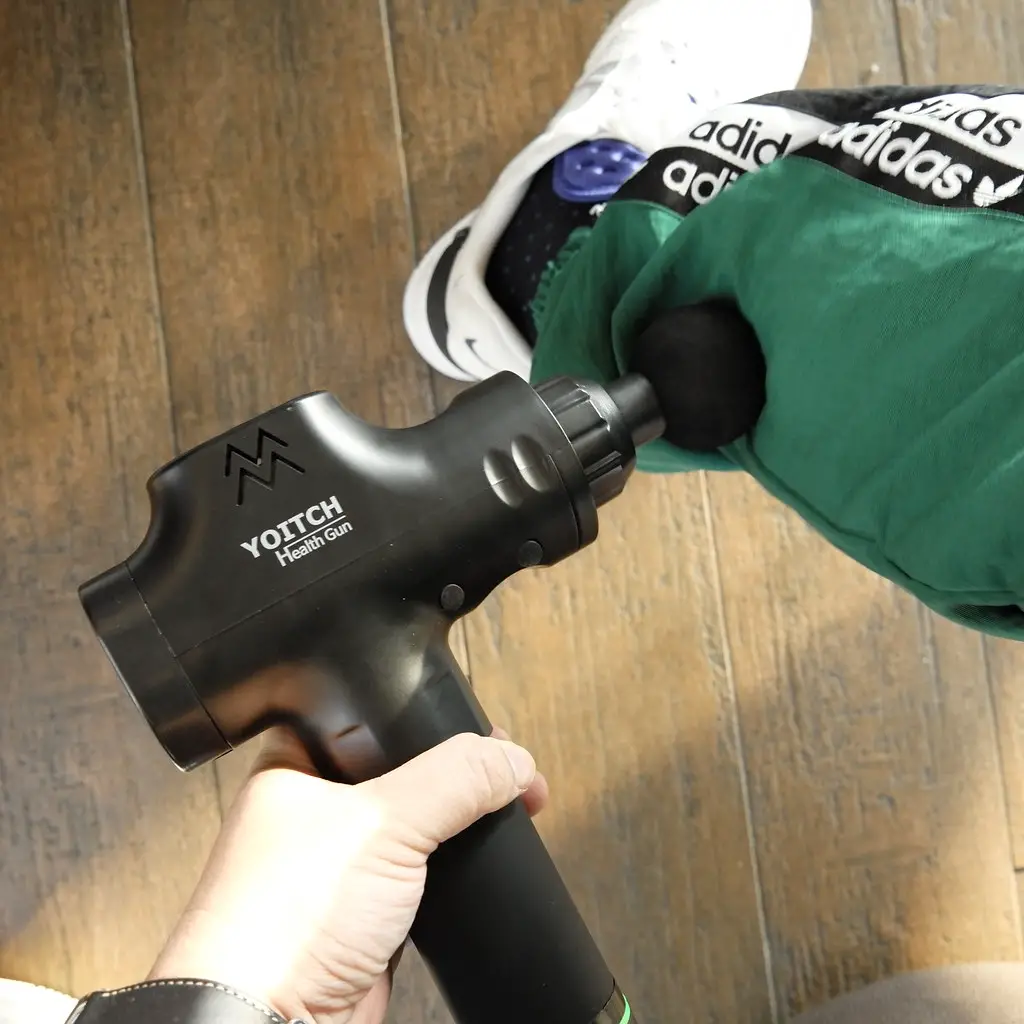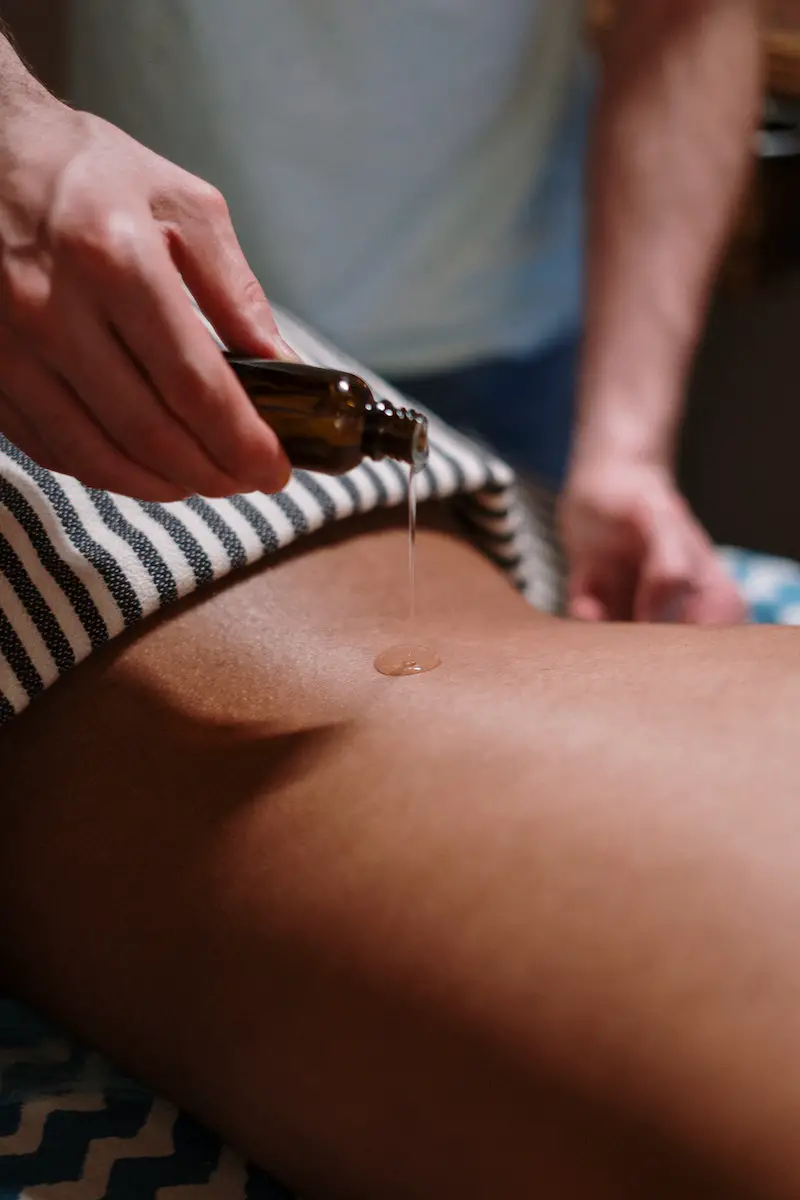Have you ever had a massage? If not, it is time to make an appointment! Massage therapy sessions are designed to help ease muscle tension and improve the overall health of your body. It does this by performing deep tissue manipulation and applying pressure on certain areas. These techniques work together to release toxins from the muscles, promote blood circulation, and provide pain relief for sore muscles. In this blog post, we will discuss how massage helps relieve muscle tension in the body as well as some benefits that can be achieved through regular treatments.
The Science Behind How Massage Helps Muscles:
- It is a well-known scientific fact that massage therapy releases toxins from the muscles. These toxins are released as a result of deep tissue manipulation and applying pressure on certain areas, which help to relax your body and release tension in tight muscle groups. After undergoing these treatments, people often report feeling less soreness or pain due to their increased flexibility.
- Massage can also help you become more aware of your surroundings. This is because it releases endorphins, which are chemicals that cause a feeling of happiness and helps improve moods. A study conducted by the American Medical Association found that patients who were given massages reported lower stress levels as well as improved mental health after receiving their sessions.
- Massage therapy has been proven to help reduce pain and inflammation in people with arthritis, carpal tunnel syndrome, fibromyalgia, and other chronic diseases or injuries.
- It is also a great way to improve your sleep quality if you suffer from insomnia or have trouble falling asleep.
- Research has found that people who suffer from chronic lower back pain as a result of an injury or medical condition often find relief in massage therapy sessions because they can provide significant long term improvements to the quality of life, speed up recovery time as well help reduce muscle tension.
- Massage therapy stimulates the immune system and helps to reduce pain, tension, stress levels as a result.
- It has been found that massage therapy can also help people with anxiety due to its ability to relax muscles and improve mood so you feel less stressed overall. It is often prescribed for those who have trouble relaxing or are unable to sleep at night.
- Massage therapy has been proven to provide significant long term improvements to the quality of life, speed up recovery time as well as help reduce muscle tension in those who suffer from chronic lower back pain caused by an injury or medical condition.
Why does Pressing on Sore Muscles Feel Good?
This is because of a phenomenon called “tactile stimulation.” This means that when you apply pressure to sore muscles, it releases endorphins which are chemicals in your brain that provide feelings of happiness and relaxation.
It also helps bring blood flow to those areas and allows for better circulation overall.
Massage therapy has been proven to help reduce pain, tension, stress levels as well as help people who suffer from chronic lower back pain caused by an injury or medical condition.
Not only does it release toxins that can affect your muscles and joints but it also helps to stimulate the immune system which is why massage therapy has been proven to be beneficial for those with anxiety who have trouble relaxing or sleeping.
Does Massage Weaken the Muscles?
Some people believe that you could be weakening the muscle by massaging them. However, this is not true at all. Massage actually helps to strengthen muscles and increase flexibility as well as improve circulation throughout your body which can lead to a healthier lifestyle overall.
In my experience, I would often feel more awake after receiving a massage therapy session.
I would feel less stiff and sore, which allowed me to move with greater ease. I have also noticed that my focus on the tasks at hand has been more consistent since receiving massage therapy sessions as well.
It is a scientifically proven fact that massage releases toxins from muscles such as lactic acid which builds up when you are exercising or doing strenuous work.
Does Massage Improve Muscle Tone?
Massage therapy strengthens muscles and improves flexibility as well.
You will notice that your muscle tone is improved after receiving a massage session because it releases toxins from your body which can have adverse effects on other areas of health.
Massage therapy can help to improve muscle tone due to its ability to increase blood flow and circulation. This can lead to a healthier lifestyle overall.
Comparing massage with other exercise regimes, it is seen that massage is a more effective way of losing weight and building muscle tone.
Massage has been shown to increase the range of movement in muscles because it encourages deep tissue nutrition and blood circulation. Massage also helps prevent injuries by stretching muscles to avoid tension from being placed on them.
Massage improves circulation, which increases nutrient consumption and leads to increased muscle tone, according to a study by ESPN.com. It also provides relief due to its ability to relax muscles while providing nutrients that heal damaged tissues.
Why does a Deep Tissue Massage Feel Good?
In this section, we will take a look at the various ways in which deep tissue massage can give you benefits.
A deep tissue massage is also known as Swedish massage and is a type of massage therapy that uses long strokes to target the deeper layers of muscle tissue. These strokes are often accompanied by deep breathing exercises, stretching of tight muscles, and friction from the use of heated stones or aromatic oils.
The release of endorphins during a deep tissue massage triggers feelings of well-being and relaxation, and it can help decrease stress levels. Deep tissue massage is a type of massage that focuses on the deeper layers of muscles and tissues like you would find in your hips or calves. It can help decrease pain and the risk of injuries, release built-up tension and improve blood circulation.
This is because deep tissue massages have a variety of ways to target trigger points – the areas in your muscles that cause muscle spasms and pain. Trigger points are often found at specific locations in your body but can also be caused by certain activities or injuries. They are located in dense muscle groups like the quadriceps, iliopsoas, glutes, latissimus dorsi, and others.
Trigger points are often activated by a lack of oxygen to the muscles, which is why deep tissue massage can feel really good. It improves blood flow and releases endorphins that trigger feelings of well-being.
Can a Masseuse Feel the Tension in your Muscles?
Even though you can’t see the tension in your muscles, a masseuse is able to feel it.
This is a question that many people ask before their massage. Massage therapists are able to sense how tense the muscles in the body are from their touch and feel.
Massage therapists use their sensitive hands and fingers to determine if there is tension, pain, or inflammation in the muscles. They will also know if there are any other health issues a person might be experiencing which can be aggravated by muscle tension.
This is because massage therapists are very skilled in their profession and can use pressure points to trigger different responses from the muscles in your body. Pressure points are places on your body where your muscles are overstretched, which sends electric impulses into the nervous system. It then sends messages back to the brain about what’s happening in these areas of the body for example if there is tension or pain.
The massage therapist will use their hands and elbows to knead your tight or tense areas so that they can release some of the built-up toxins. This works by breaking down knots as well as scar tissue which is often caused by overworked muscles.
You will feel this tension release in your muscles after receiving a deep tissue massage because the therapist is able to work with different types of strokes and techniques that target your individual needs. This can be very beneficial for chronic pain sufferers, as well.
What does a Tight Muscle Feel like?
Your muscle is tight when your body is struggling to keep it relaxed. It may be a sign of injury, inflammation, or infection.
A tight muscle feels:
– taut and painful
– as if there’s a knot in your shoulder or back
– as if there is a heavyweight pulling on your muscle
If you have any of these symptoms, you should see a doctor or massage therapist.
A tight muscle can also be caused by:
– overworking the muscles, especially with repetitive movements like those used in activities such as cycling and tennis
– injury to the muscles, such as a pulled muscle
– illness like the flu or pneumonia
– dehydration
– lack of sleep and/or overtraining syndrome.
Why do muscle knots feel crunchy?
The feeling of a muscle knot is described as a “crunchy” sensation. This crunchiness can also be felt when you apply pressure to these areas, or if the therapist applies pressure during your massage session.
Muscle knots feel crunchy because they are tense. The reason behind this is that muscles contract when you tighten your muscles and then release the tension. When they do, a muscle knot is formed and it feels like a kind of cramp.
A knot may also be formed if you have been exercising for a long time and your muscles have been adapting to the new exercise routine.
The muscles will become tight because they are trying to protect the injury site as well as prevent any further damage from happening, which is why it’s so important that you seek treatment for your muscle knots by a qualified therapist.
How can I tell if my massage was effective?
Sometimes it can be difficult to tell if your Massage was effective because you may need a few sessions. There are a few ways you can tell if your massage was effective. Try some of these do-it-yourself methods
- pain relief
- less muscle tension
- improved range of motion in the area being massaged (such as an arthritic joint)
- more flexibility
- Check your breathing rate – if it’s lower than before you should be feeling more relaxed
- How do you feel? If you feel noticeably more relaxed than before, consider the massage a success
- Take note of how your body feels after leaving the spa – if you can tell that there is less muscle tension, the stress in your muscles is relieved
If you have chronic joint pain this may take more than one session to notice an improvement. Keep track of how much better your symptoms are with each massage session and talk about it with your therapist so they know what’s going on!
If you’re not sure whether or not your deep tissue massage was effective, don’t worry – you will know over time.
Is having a Massage Every Day Bad?
It depends on the type of massage you’re receiving. If your therapist is giving you a light Swedish or sports massage, it’s fine to have one every day – as long as they aren’t too strenuous for your body.
If you are in need of a deep tissue massage because you have chronic pain, this might be overdoing it – talk to your therapist about how often you should be getting a massage!
Everyday massage is not a bad thing and can improve general health. However, if you have some specific medical conditions, it might be better to avoid a daily massage.
There are numerous benefits of having a massage every day. It increases one’s happiness and productivity levels, helps them sleep better at night and improves their overall well-being.
There is a myth that people who take a massage every day are less productive. This is not true because there’s no evidence to support this belief.
Comparing Massage With Other Exercises
Massage is an activity that involves “stroking” or “effleurage” the muscles, skin, tendons, ligaments and other soft tissue. It has been practised for at least 5,000 years and is still performed in most traditional medical systems.
On the other hand, exercise is any physical activity that enhances or maintains physical fitness. The definition of exercise is not limited only to aerobic and strength training but also includes stretching, balance exercises and bodyweight exercises like yoga poses.
Massage has many benefits such as relieving pain, reducing stress, improving relaxation and promoting sleep. Exercise increases your energy levels which help you stay alert and focused throughout the day while also reducing your risk for heart disease
In conclusion, massage can help you relieve muscle tension while exercise can help you maintain your energy levels. So next time you feel achy, stressed out or tired, try some massage!




